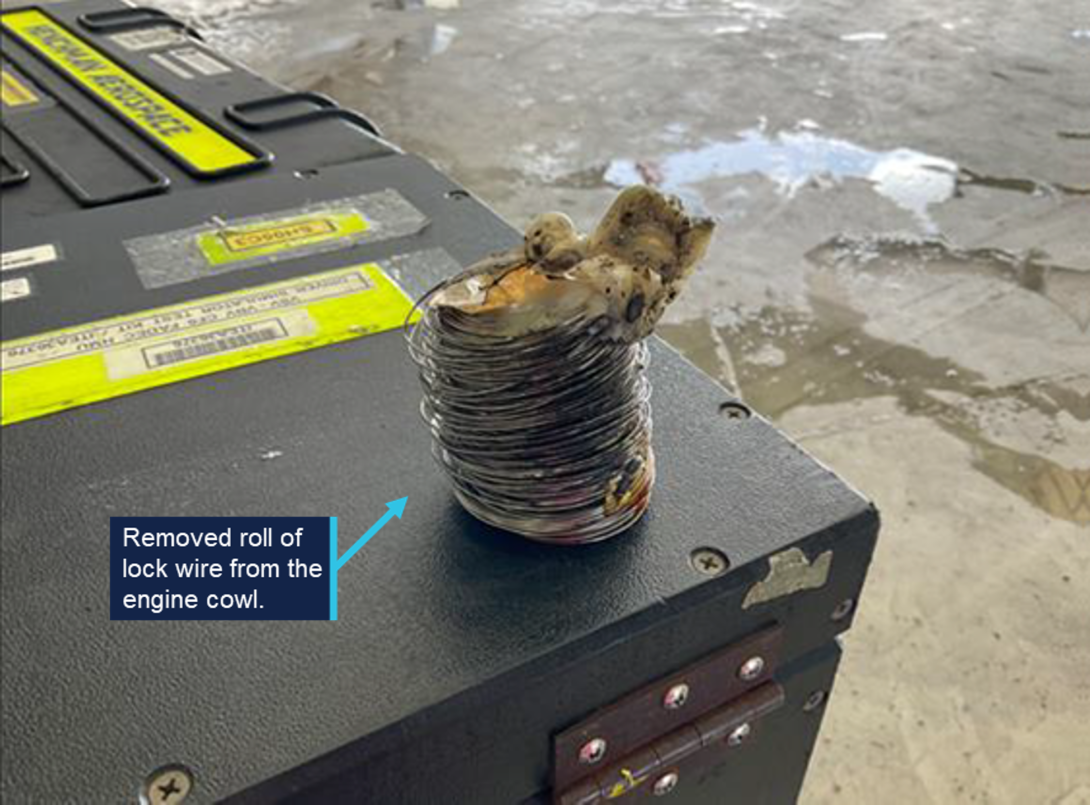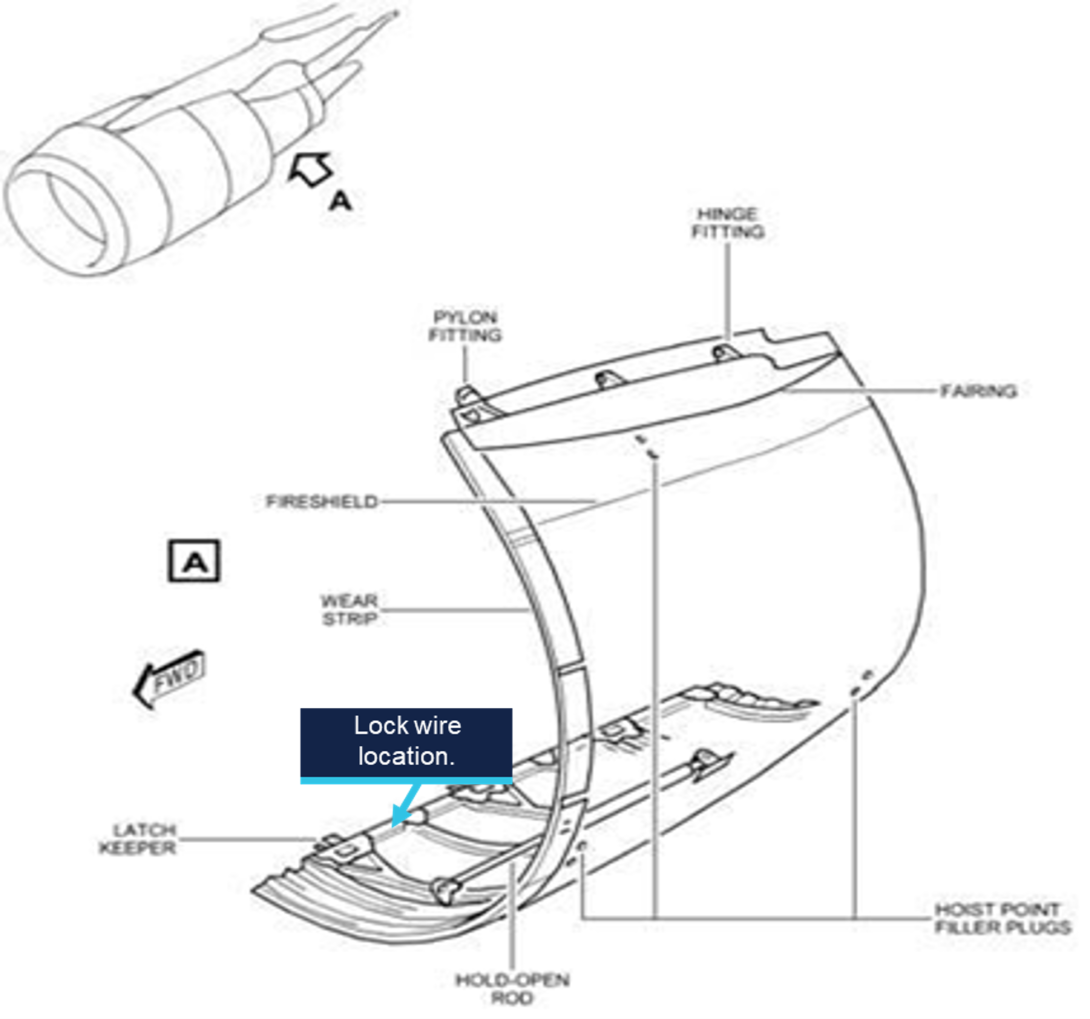| Occurrence Briefs are concise reports that detail the facts surrounding a transport safety occurrence, as received in the initial notification and any follow-up enquiries. They provide an opportunity to share safety messages in the absence of an investigation. Because occurrence briefs are not investigations under the Transport Safety Investigation Act 2003, the information in them is de-identified. |
What happened
On 18 February 2025, an Airbus A330‑303 was undergoing a scheduled aircraft maintenance check at Brisbane Airport, Queensland. Multiple tasks were completed by engineers throughout the aircraft’s inspection. Engineers used lock wire to complete various tasks underneath the engine cowl. Once completed, the engineers signed off the aircraft as ‘safe for flight’ and it was released to service. The aircraft was subsequently flown on 51 international flights.
On 17 March 2025, the aircraft was due to undergo further routine aircraft maintenance checks. Engineers removed the engine cowl and a roll of lock wire (Figure 1) was discovered on the inward layer of the outboard section (Figure 2). The operator advised that the roll of lock wire had inadvertently not been removed during the first maintenance inspection that occurred on 18 February 2025. There was no effect on the aircraft during subsequent international flights.
Figure 1: Roll of lock wire

Source: Operator, annotated by the ATSB
Figure 2: Engine diagram

Source: Operator, annotated by the ATSB
Safety action
The operator has communicated with its maintenance crews, in the form of a quality alert, the importance of a clearance inspection post‑aircraft maintenance. Any existing loose lock wire across the business has also been returned to a controlled point of issue, and lock wire without clear identification information has been discarded.
Safety message
This incident demonstrates the importance of extensive crosschecks and accuracy when declaring an aircraft is ‘safe for flight’ and subsequently returned to service.
Checklists are an essential tool for overcoming memory item mistakes and assumptions. While their value may seem redundant or may not be obvious for frequently performed tasks like routine maintenance inspections, in this occurrence it is likely that if checklist items had been completed, the presence of the lock wire would have been detected. A visual confirmation check prior to declaring the aircraft safe for flight should always be best practice.
About this report
Decisions regarding whether to conduct an investigation, and the scope of an investigation, are based on many factors, including the level of safety benefit likely to be obtained from an investigation. For this occurrence, no investigation has been conducted and the ATSB did not verify the accuracy of the information. A brief description has been written using information supplied in the notification and any follow‑up information in order to produce a short summary report, and allow for greater industry awareness of potential safety issues and possible safety actions.


